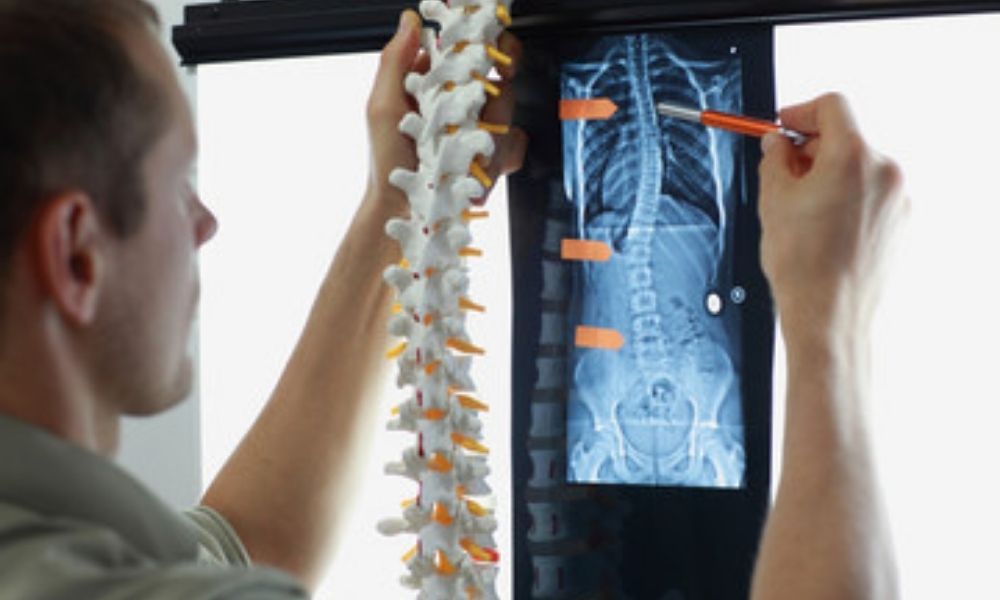Once your spine begins to curve, it’s hard to straighten it. If you’re one of the many people who lives with scoliosis or has a child with the condition, life may look different for you. Figuring out the most important dos and don’ts for people with scoliosis is a challenge for many living with a curve in their spines. Not all doctors hand you a pamphlet that details how to navigate your condition. Let these tips guide you through this tough time as you manage your scoliosis.
Do Strengthen Your Core
A strong core is the foundation for a healthy spine. You can help improve your condition by exercising the muscles in your back and shoulders to improve stability. Common workouts to build core strength include:
- Squats
- Leg lifts
- Side bends
- Planks
- Superman
Pro Tip: Focus on your posture throughout the day to work on core strength as well. The best way to target the muscles you need is by using them.
Do Stay Active
Especially if you’re bracing for scoliosis, you may think you can’t play and exercise anymore. It’s important to stay active during treatment so your muscles don’t atrophy. Talk to your doctor about your lifestyle and which activities are safe for you to continue. You may need to alter treatment at times to accommodate certain things you want to do.
Do Enjoy Your Favorite Activities
Don’t let a scoliosis diagnosis prevent you from enjoying your normal life. You can still do most of the same things you enjoyed prior to treatment. Engaging in the things that make you happy will help you manage your treatment. Don’t stop taking walks, enjoying sports, and hanging out with friends. You can swim, run, and play on jungle gyms like everyone else.
Do Yoga Stretches
Some activities are better suited for people with scoliosis than others. Stretching your back is a great way to improve flexibility and posture. It helps to focus on poses that lengthen the muscles between the ribs and stabilize the back. Focus on your core and practice in front of a mirror to help create a neutral spine.
Many different poses can help improve core strength. Some of the best include:
- Bridge pose
- Side plank
- Mountain pose
- Half-forward bend
- Downward facing dog
- Locust pose
- Torso twists
Pro Tip: While most people do the same number of poses on each side, people with scoliosis may benefit from an asymmetrical routine.
Do Chemical Lab Testing
Although the cause of scoliosis is unknown for most people, it’s important to continue testing to determine if hormonal, chemical, or nutritional imbalances are contributing to it. Correcting problems with the brain’s neurotransmitters can help correct issues related to scoliosis. Since these imbalances are directly related to spine control and alignment, it’s important to have the test.
Do Buy a Heating Pad
Scoliosis can cause joint pain for some individuals. Your doctor may prescribe medicine, depending on the severity, or you may choose to take an over-the-counter pain reliever. Heat is an alternative method. Keep heating pads around so you can warm up your joints. It’s common for pain to worsen in the winter, so be prepared to turn up the heat and wear extra layers.
Do Sleep on a Quality Mattress
Just because you have scoliosis doesn’t mean you should wake up with a sore and stiff back every morning. Invest is a quality mattress to help prevent aches. Most likely, you’ll need a medium to firm mattress to help align your spine and keep it as straight as possible throughout the night.
Do Eat an Anti-Inflammatory Diet
Nothing you eat can cause scoliosis. Still, you may reduce some symptoms by eating foods that reduce inflammation. Since many people with scoliosis also have spinal inflammation, it may help to consume foods such as:
- Almonds and walnuts
- Avocados
- Green tea
- Salmon and tuna
- Berries
- Tomatoes
- Spinach and kale
Don’t Wait To Begin Treatment
As soon as you notice the signs you or your child may have scoliosis, start seeing a doctor right away. It’s important to begin treatment and keep with it as soon as possible to prevent further curvature of the spine. Early intervention is the best way to avoid surgery. The most common nonsurgical scoliosis treatment is observation, though some patients must wear a brace. You should see your doctor regularly to monitor the progression of the curve.
Don’t Carry Heavy Items
Try not to carry anything heavy on the side of your body that curves. You don’t want to add pressure or gravity to your back. Overloaded backpacks, heavy weightlifting, and moving boxes are not safe for individuals with scoliosis. Either find alternative ways to move these items, move them in smaller batches, or try to equally distribute the weight.
Follow these guidelines to maintain a healthy spine during and after treatment. Many people live with scoliosis and manage their condition by visiting their doctor regularly, maintaining core strength, and sleeping on a quality mattress. Talk to your doctor if you experience pain so you can find ways to manage it. There’s no reason you shouldn’t enjoy the life you love. Keep the most important dos and don’ts for people with scoliosis in mind to prevent your spine from curving further. Learn more about scoliosis when you reach out to Green Sun Medical and connect with a community of experts.


